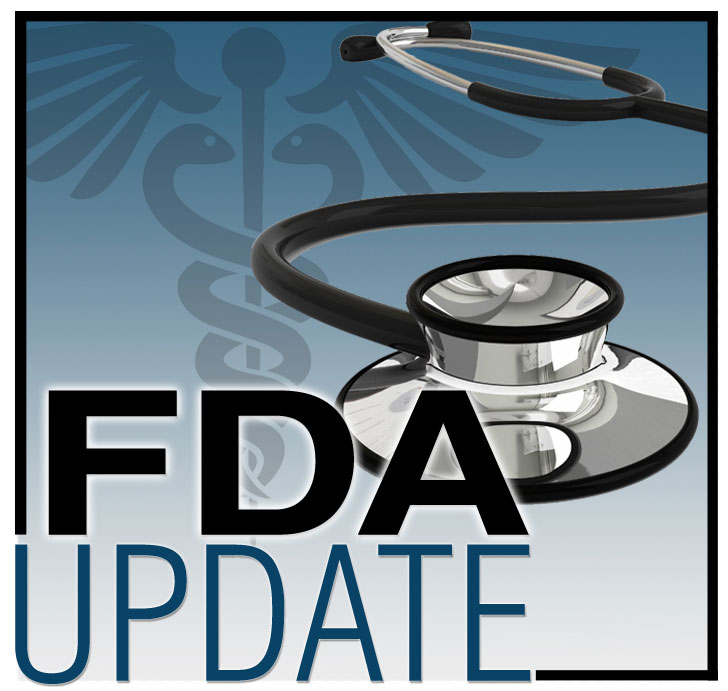
On June 22, 2017, the U.S. Food and Drug Administration (FDA) granted regular approval to the combination of rituximab and hyaluronidase human (Rituxan Hycela™, Genentech Inc.) for adult patients with follicular lymphoma, diffuse large B-cell lymphoma, and chronic lymphocytic leukemia.
The approval provides patients a subcutaneous route of rituximab administration that shortens the administration time to five to seven minutes as compared to IV infusion that can take several hours. This new product also provides for flat dosing.
The approval specifies the combination is indicated for the following previously approved indications for rituximab:
- Relapsed or refractory, follicular lymphoma (FL) as a single agent.
- Previously untreated FL in combination with first line chemotherapy and, in patients achieving a complete or partial response to rituximab in combination with chemotherapy, as single-agent maintenance therapy.
- Non-progressing (including stable disease), FL as a single agent after first-line cyclophosphamide, vincristine, and prednisone (CVP) chemotherapy.
- Previously untreated diffuse large B-cell lymphoma (DLBCL) in combination with cyclophosphamide, doxorubicin, vincristine, prednisone (CHOP) or other anthracycline-based chemotherapy regimens.
- Previously untreated and previously treated CLL in combination with fludarabine and cyclophosphamide (FC).
Rituximab and hyaluronidase is not indicated for the treatment of nonmalignant conditions.
Approval was based on multiple randomized clinical trials demonstrating the following:
- Noninferior rituximab trough concentrations (Ctrough) levels for rituximab and hyaluronidase 1,400 mg/23,400 units compared to IV rituximab 375 mg/m2
- Noninferior rituximab Ctrough levels for rituximab and hyaluronidase 1,600 mg/26,800 units compared to IV rituximab 500 mg/m2
- Comparable efficacy and safety results of the two products.
Trial results are provided in the drug prescribing information.
The most common adverse events (≥ 20%) observed in patients with FL include infections, neutropenia, nausea, constipation, cough, and fatigue. The most common adverse events (≥20%) observed in patients with DLBCL include infections, neutropenia, alopecia, nausea, and anemia. The most common adverse events (≥ 20%) observed in patients with CLL were infections, neutropenia, nausea, thrombocytopenia, pyrexia, vomiting, and injection site erythema.
The recommended doses are 1400 mg rituximab and 23,400 units hyaluronidase human for FL and DLBCL and 1600 mg rituximab and 26,800 units hyaluronidase human for CLL. Refer to the prescribing information for specific dosing schedules. Rituximab and hyaluronidase treatment should be initiated only after patients have received at least one full dose of a rituximab product by intravenous infusion.
Full prescribing information is available.
Healthcare professionals should report all serious adverse events suspected to be associated with the use of any medicine and device to FDA’s MedWatch Reporting System by completing a form online, by faxing (800-FDA-0178), or by mailing the postage-paid address form provided online, or by telephone (800-FDA-1088).
Follow the Oncology Center of Excellence (OCE) on Twitter @FDAOncology.
Check out recent approvals at the OCE’s new podcast, Drug Information Soundcast in Clinical Oncology (D.I.S.C.O.).
In collaboration with the FDA and as a service to our members, ONS provides updates on recent FDA approvals and other important FDA actions (e.g., updated safety information, new prescribing information) pertaining to therapies for patients with cancer. This allows the agency to inform oncologists and professionals in oncology-related fields in a timely manner. Included in the FDA updates is a link to the product label or to other sites for additional relevant clinical information. In supplying this information, ONS does not endorse any product or therapy and does not take any position on the safety or efficacy of the product or therapy described.





